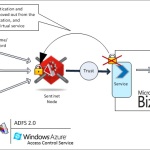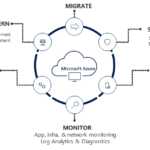Minimum Viable Product – A summary of the idea presented by ‘The Lean Startup’
When entrepreneurs invest time and money into developing a new product, they have one ultimate goal in mind i.e. the developing of a product that not appeals to a customer but also ensures that the interest of that customer is converted into purchase behavior.
Keeping this goal and the cost of developing a new product in perspective, constructive feedback during the product development stage becomes imperative.
Traditionally, entrepreneurs have employed two strategies to gather the feedback. The first strategy focuses on making a product with as many features as possible with the rationale that the increase in the number of features offered will increase the chances of gaining a customer since different features attract different consumers. However effective this approach may sound, the fundamental problem with it is that a lot of time and resources are invested into making a product that might not appeal to the customers to begin with. And by the time the entrepreneurs gather this crucial data regarding the feasibility of the product, it is too late since a lot of cost has already been incurred and the product has been introduced to the market.
The second strategy utilized by entrepreneurs is labeled “release early, release often”. This simply states that companies should launch their products into the market and begin the feedback gaining process simultaneously. The suggestions that they gather regarding the features that should be incorporated into the product, should then be converted into the company offering those features in the form of a revised version of the product. The problem with this approach is evident. Utilizing this approach puts the product development stage into a vicious never ending circle. Since it is fair to assume that customers don’t know what they really want, it is also fair to conclude that they will constantly suggest features that they think they want. And ultimately, the company will not succeed at either understanding the important needs of the customer or addressing them via its product.
This is where Minimum Viable Product (here onwards referred to as MVP) becomes important. Very simply put, it’s the development of a product with the minimum features that will help visionary customers understand the ultimate end product and offer constructive feedback related to it.
To decide what version of the product can be labeled as the MVP, product developers must keep into view the problem that their product is solving or the market gap it is addressing, and analyze if a particular feature is necessary in the ultimate objective that the product must achieve.
Another term that needs more explanation is “visionary” customers. These are the customers that share your vision of what the end product will be just by looking at the MVP. What this means is that they will have the ability to distinguish between the core and added features of the product. Hence, they will understand that in order to evaluate the performance, success or feasibility of the end product, MVP is enough to conduct a fair assessment.
Developing a Minimum Viable Product is an effective tool to forecast the performance of the product. In saying that, entrepreneurs must keep into perspective the cost of developing the MVP and the possible impacts of a feedback that predicts negative or no effects of the launch of the product.







